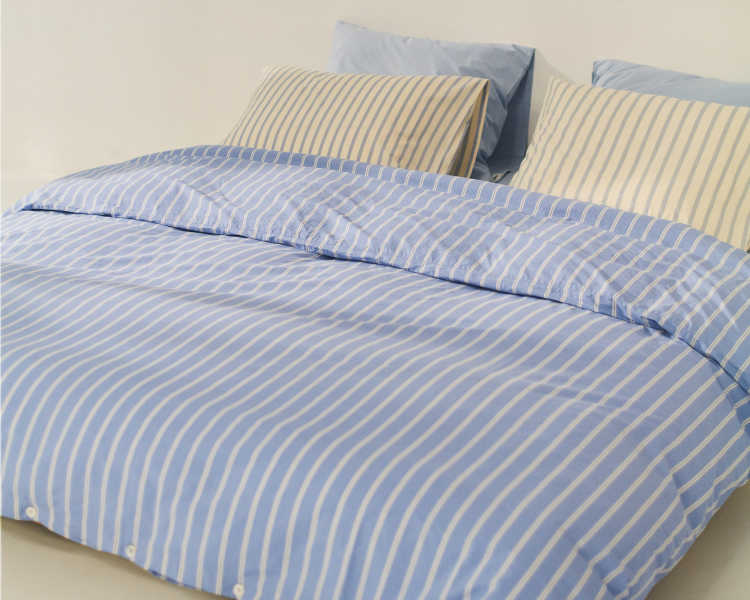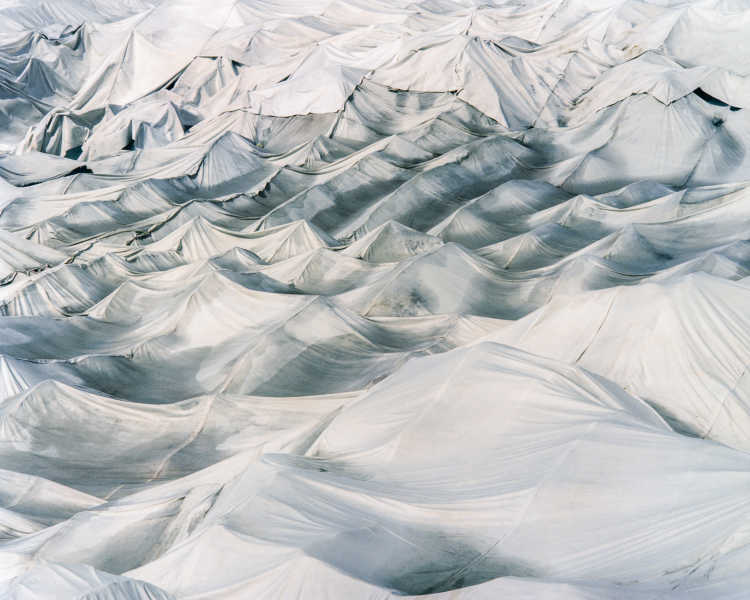Le Corbusier’s little cabin by the sea
In 1951, on a corner table at Thomas Rebuttato’s Côte d’Azur restaurant, l’Étoile de Mer, Le Corbusier drew up the plans for a holiday home. A place where two people could sleep, wash, take shelter from the heat or the rain, read, write or draw, all whilst enjoying the magnificent views.
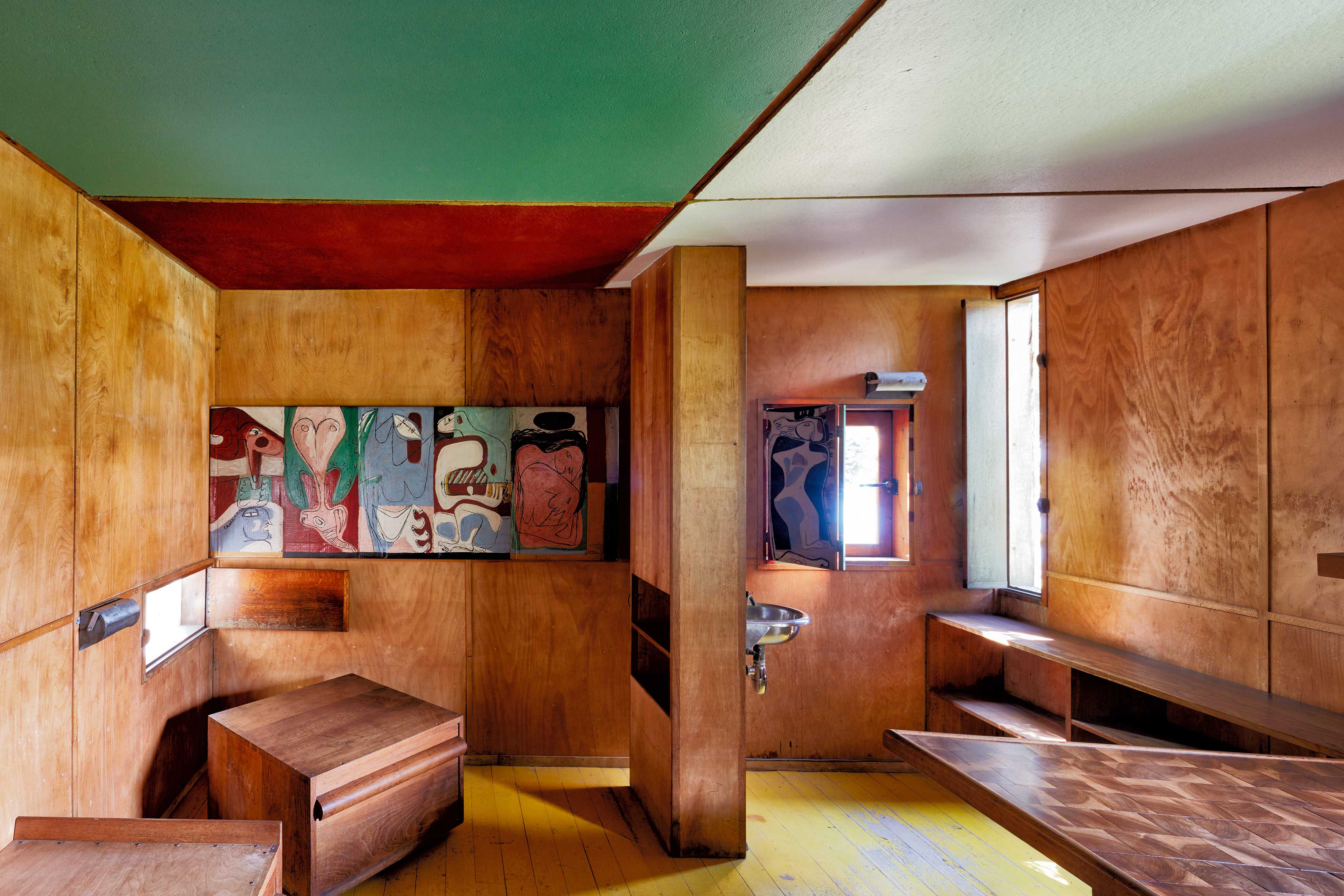
Le Corbusier had visited Eileen Grey and Jean Badovici’s Modernist villa E-1027 multiple times throughout the 30s and developed somewhat of an obsession. He wrote that he was “dying to dirty the walls: ten compositions are ready, enough to daub the whole lot” – which he did, much to Grey’s chagrin. After failing to purchase the villa on multiple occasions, he set his sights on building his own sanctuary next door.
The drawing reportedly took 45 minutes and a year later, the house was built almost exactly as it was sketched. “They are final; nothing has been changed; the little house was built from a clean copy of these drawings”, Le Corbusier would go on to note.
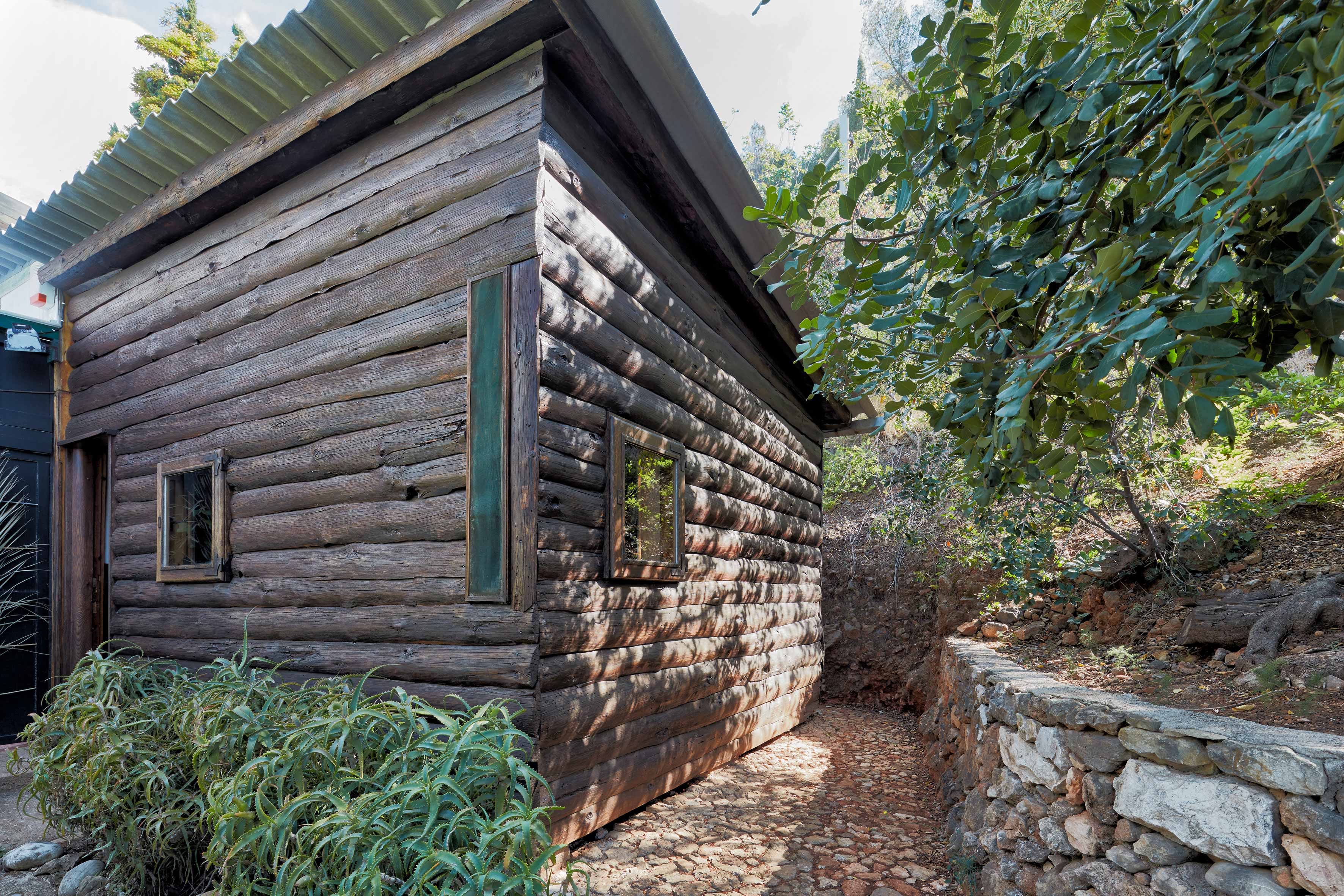
The small house in question is Le Cabanon, a single-room wood cabin attached to the restaurant in which it was conceived, clad in pine bark. Measuring at just 3.66m x 3.66m, or 3.66 x 4.36 if you include the cabin’s entrance hallway, the compact space is based on Corbusier’s own Modulor – a system of dimensions devised around the height of a man with his arm raised, which Corbusier argued created harmony between humans and architecture.
The cabin’s interior is divided into different zones, allowing for a rest area, a working area and a toilet area with a washbasin. It’s lit by two 70 cm-wide windows, with double-hinged mirrored shutters that expand the sea view. The furniture is custom-made and often built-in, comprising a bed, a table, some storage and little else.
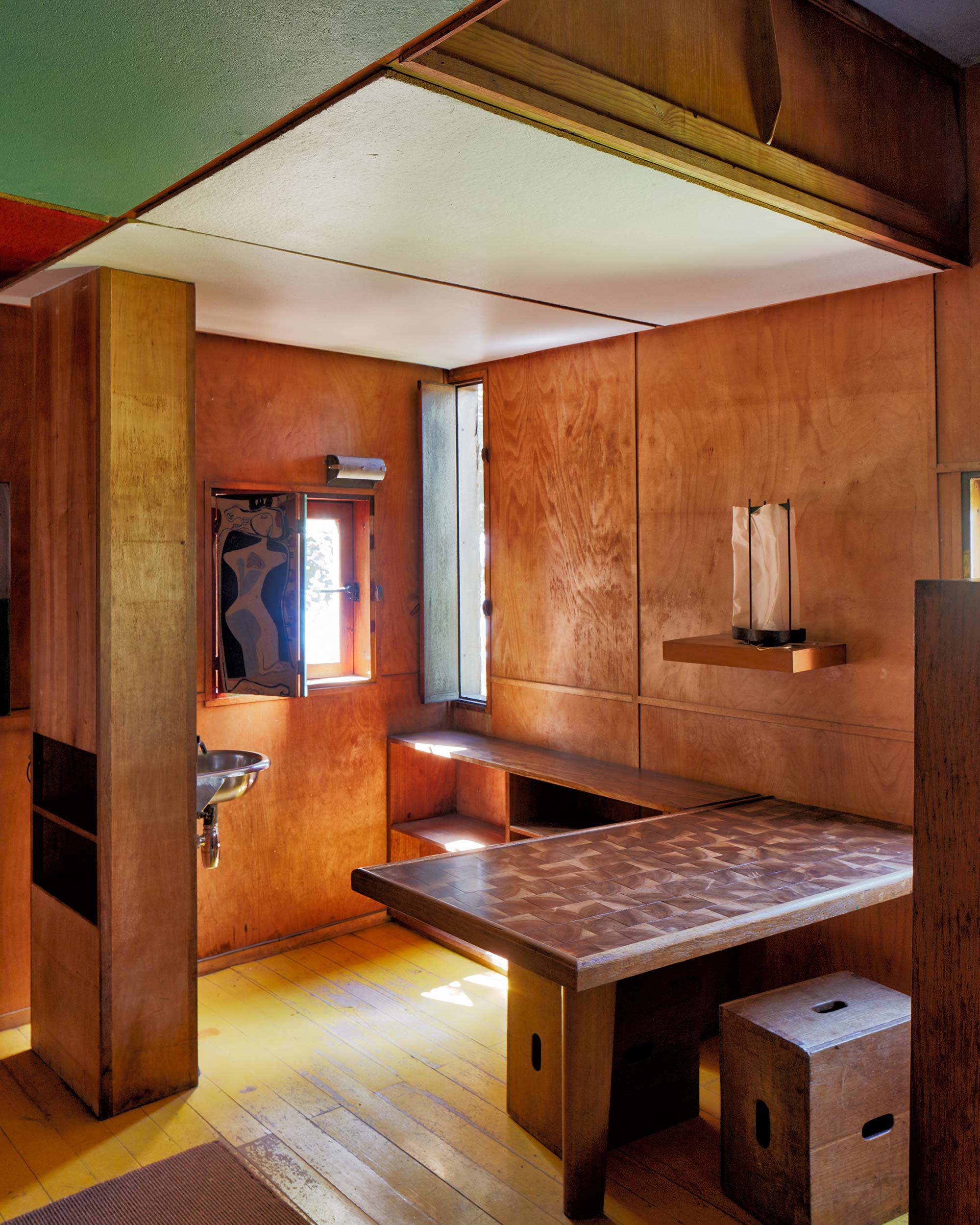
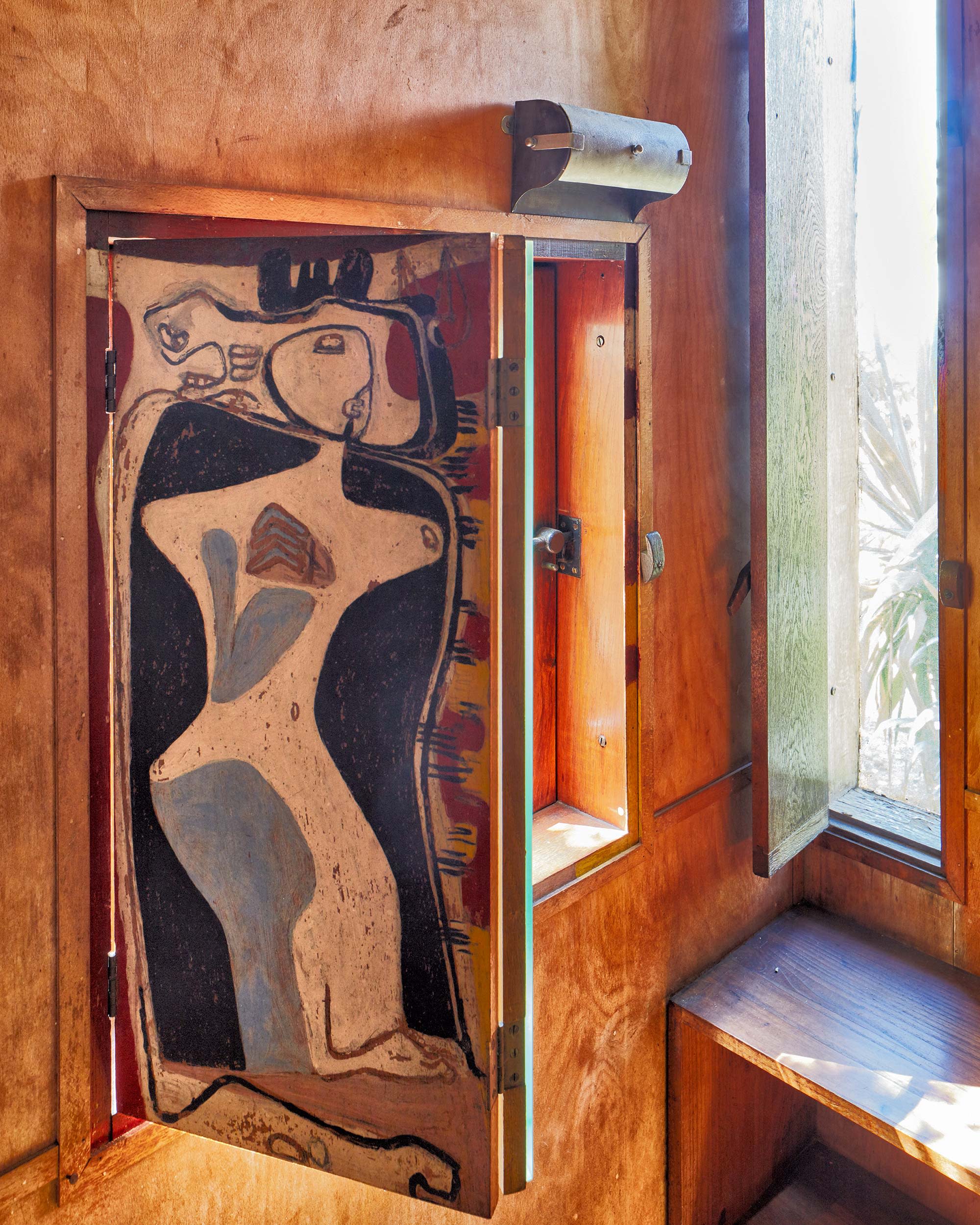

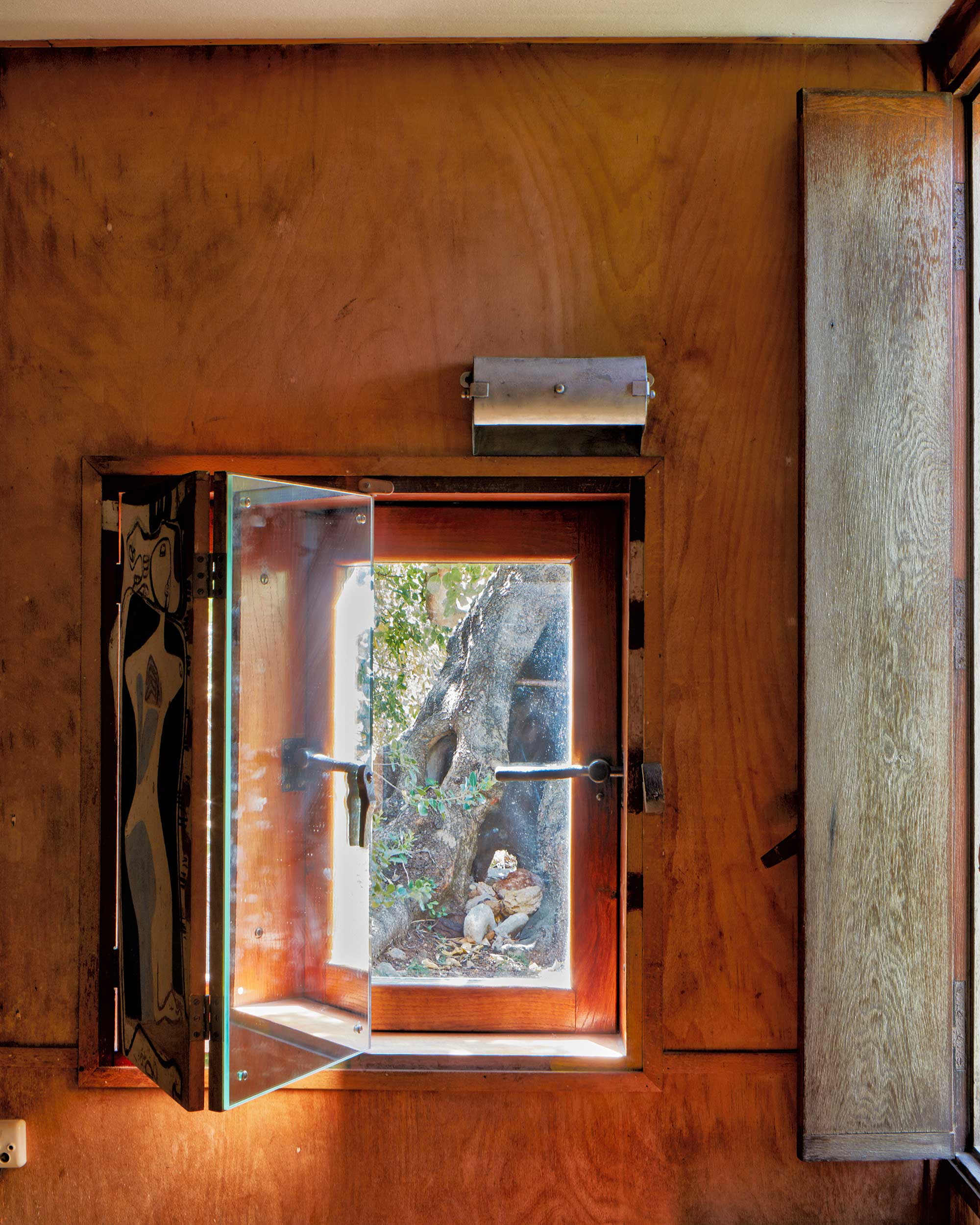
While sparsely furnished, the cabin is far from minimal. The floor is painted bright yellow, the ceiling is clad in various panels of green, red, white and black, and the walls are decorated with Corbusier’s murals. The colours are a mix of shades from his own colour palette, the Architectural Polychromy, and newer tones which would later be included in his additional 1959 collection; shades he used throughout his career to create dynamic or emotional effects.
In Le Cabanon, Le Corbusier’s colour theory flourishes through its subtle manipulation of light. In the rest and sleep areas, darker tones dampen the light and create calm, while in the entranceway, they seem to ease the transition from the bright outdoors to the heavy wooden space. White is placed around the table and work areas, expanding the light and filling the relevant space.
In his murals, the line between art and architecture blurs, as the cabin itself becomes both canvas and painting. Striking ochre, cobalt and ivy colours blend into the warm wooden structure and furniture. Paintings become windows and walls become paintings, without a beginning or end. The cabin appears as a living allegory for Le Corbusier, a self-styled polymath, and his claim that “there do not exist sculptors only, painters only, architects only.”
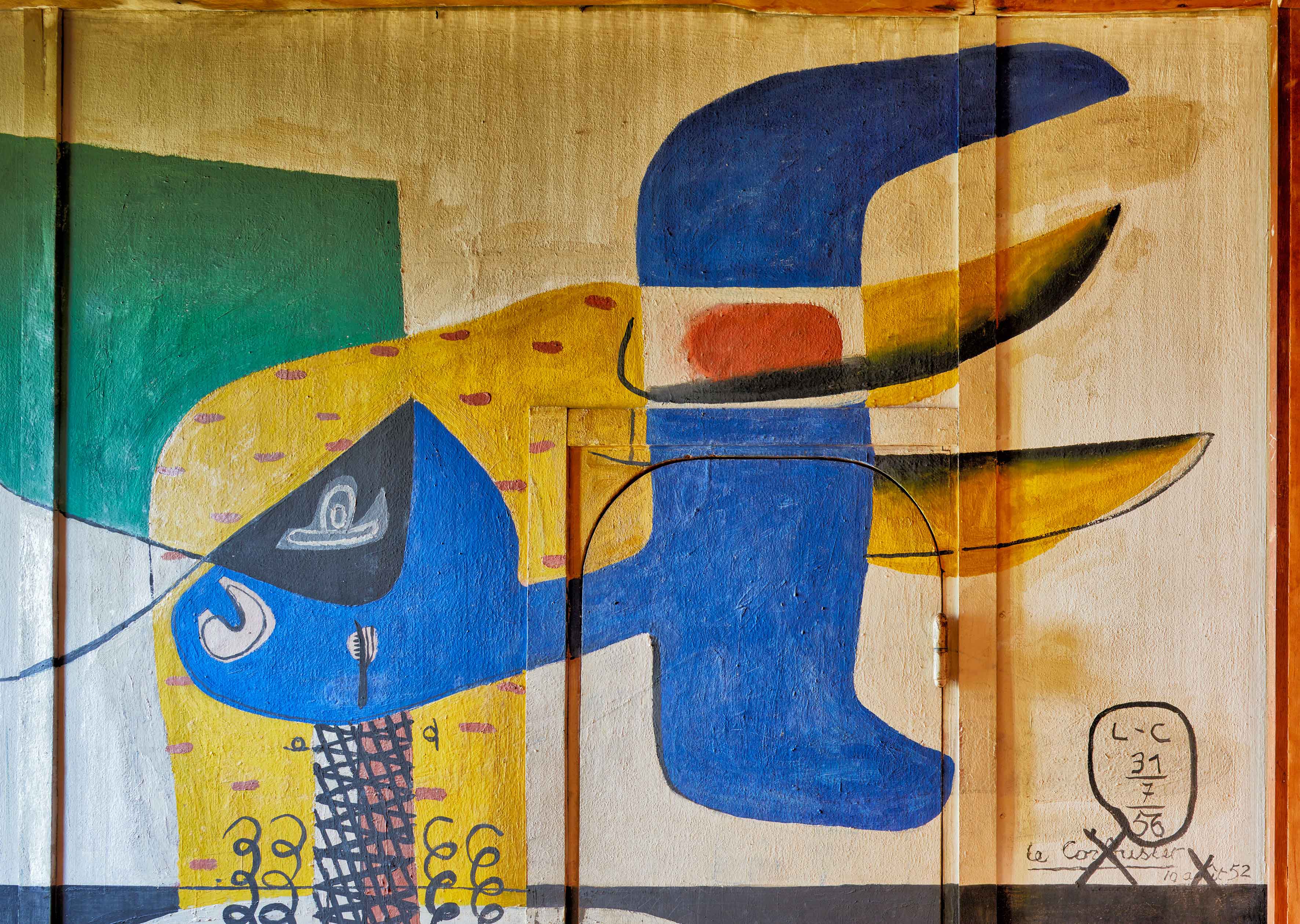
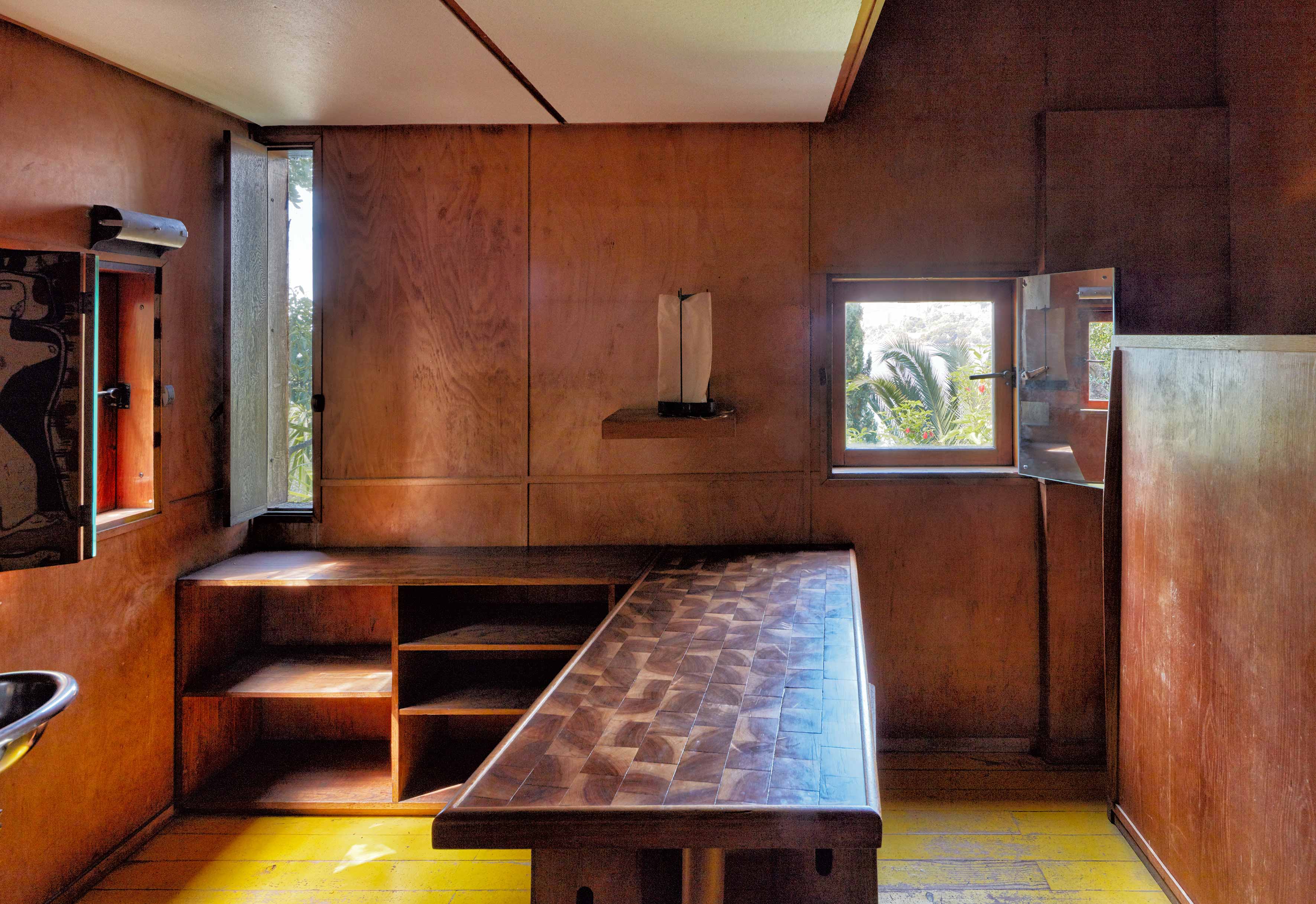

Le Cabanon expresses a life’s work, where Le Corbusier’s ideas could mature and crystalise. The modest size and functionality represent a culmination of research into modular and modern living – of the idea that a house is a “machine for living in”, and that a person can be happy “carrying out all the normal functions of daily life, sleeping, washing, reading, receiving his friends in an area of 15 square meters.”
In the years after its construction, Le Corbusier made a few adjustments: he added a hose in the front yard for showering, built an annexe for a studio, and cut a door for access to the interior of the adjoining restaurant and its refrigerator.
By doing away with the “more mundane tasks of daily living” in the only structure Le Corbusier ever built for himself, he revealed his true values. His personal “machine for living in” was a primitive hut that granted him rest and proximity to nature – a far cry from his legacy as the urbanist godfather of highrises who favoured vast concrete expanses.
Le Corbusier prophetically said of his cabin: “I’m so comfortable [...] that I’ll probably end my days here”, which he did in the summer of 1965. Aged 77, he defined his doctor's orders and went for his last daily swim in the Mediterranean Sea, where he died of a heart attack in the water.
Image credit: Cemal Emden

Le Cabanon expresses a life’s work, where Le Corbusier’s ideas could mature and crystalise. The modest size and functionality represent a culmination of research into modular and modern living – of the idea that a house is a “machine for living in”, and that a person can be happy “carrying out all the normal functions of daily life, sleeping, washing, reading, receiving his friends in an area of 15 square meters.”
In the years after its construction, Le Corbusier made a few adjustments: he added a hose in the front yard for showering, built an annexe for a studio, and cut a door for access to the interior of the adjoining restaurant and its refrigerator.
By doing away with the “more mundane tasks of daily living” in the only structure Le Corbusier ever built for himself, he revealed his true values. His personal “machine for living in” was a primitive hut that granted him rest and proximity to nature – a far cry from his legacy as the urbanist godfather of highrises who favoured vast concrete expanses.
Le Corbusier prophetically said of his cabin: “I’m so comfortable [...] that I’ll probably end my days here”, which he did in the summer of 1965. Aged 77, he defined his doctor's orders and went for his last daily swim in the Mediterranean Sea, where he died of a heart attack in the water.
Image credit: Cemal Emden
